Through Isabelle’s eyes
Posted on | February 7, 2014 | 1 Comment

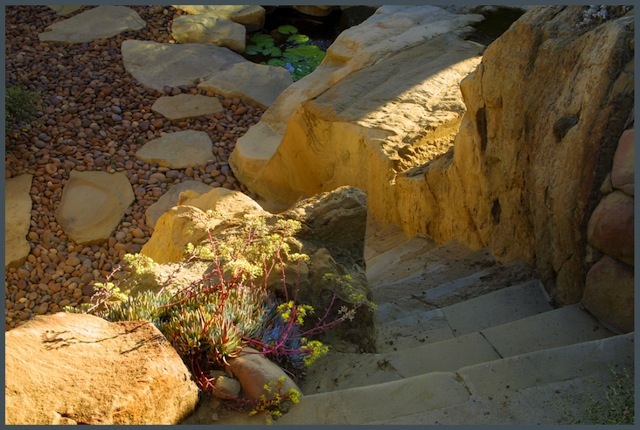
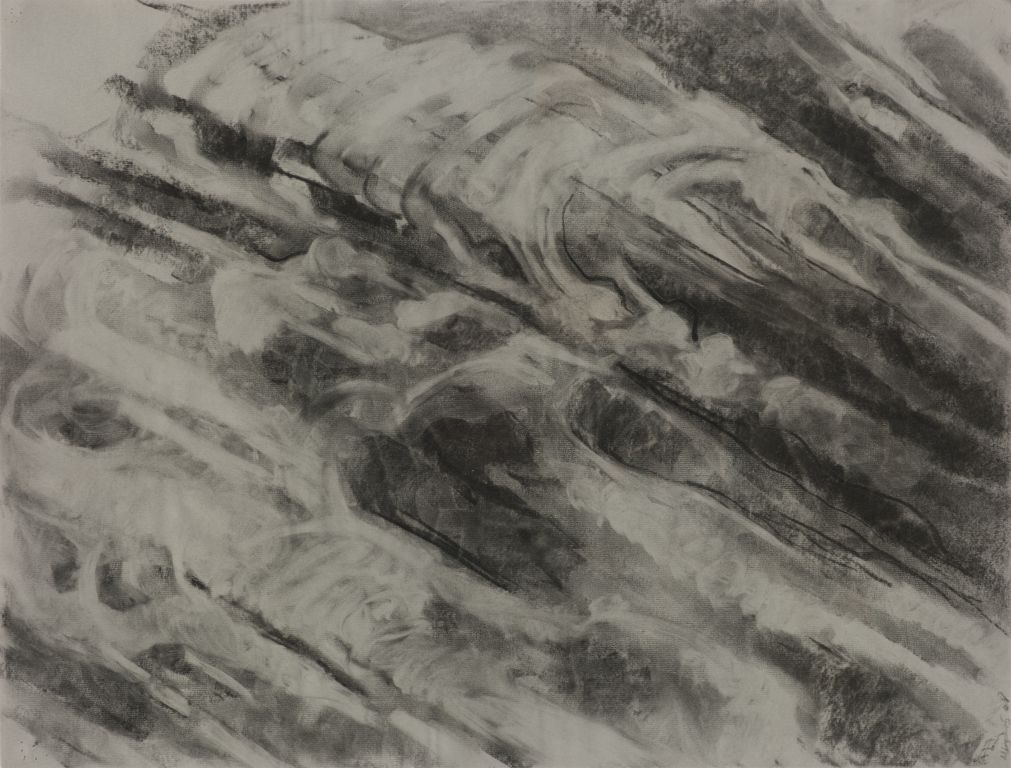
 Isabelle Greene is best known for two careers — hers and her grandfather’s. The Pasadena-born landscape architect is the granddaughter of architect Henry Greene of the defining Arts & Crafts-era firm Greene & Greene. Study the ground that she has shaped and it’s tempting to define her as a carrier of her grandfather’s flame. The craftsman ethos shines through her gardens, whether the space is a quirkily embellished potager, or the oak-draped estates of millionaire clients dotted along the south and central coast, or the wind-beaten bluffs of beach houses of yet more millionaire clients, or the hillsides descending from La Casita del Arroyo meeting house in Pasadena. Yet an all-too-brief January exhibit in Santa Barbara of Greene’s early artwork revealed something else, something out of time, sexy and bohemian about her style that seems strictly hers. Study the drawings, etchings and watercolors done when Greene was a young bride of a botanist freshly arrived in the Central Coast in the 1950s and 60s, and it’s clear that the grande dame of California landscape architects has always been an artist whose work somehow jumped from paper to land.
Isabelle Greene is best known for two careers — hers and her grandfather’s. The Pasadena-born landscape architect is the granddaughter of architect Henry Greene of the defining Arts & Crafts-era firm Greene & Greene. Study the ground that she has shaped and it’s tempting to define her as a carrier of her grandfather’s flame. The craftsman ethos shines through her gardens, whether the space is a quirkily embellished potager, or the oak-draped estates of millionaire clients dotted along the south and central coast, or the wind-beaten bluffs of beach houses of yet more millionaire clients, or the hillsides descending from La Casita del Arroyo meeting house in Pasadena. Yet an all-too-brief January exhibit in Santa Barbara of Greene’s early artwork revealed something else, something out of time, sexy and bohemian about her style that seems strictly hers. Study the drawings, etchings and watercolors done when Greene was a young bride of a botanist freshly arrived in the Central Coast in the 1950s and 60s, and it’s clear that the grande dame of California landscape architects has always been an artist whose work somehow jumped from paper to land.
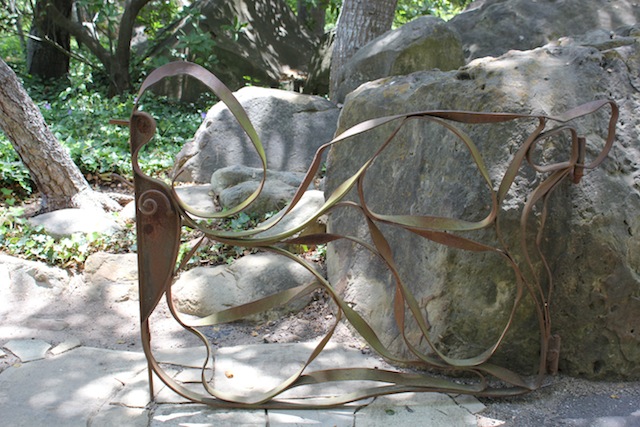 A fine new potted biography by Jocelyn Gibbs for the Cultural Landscape Foundation confirms that, indeed, Greene first trained as an artist. Rather than reprise that handsome and capable account of Greene’s career, below instead are fragment thoughts and photos from visits paid to various gardens and lectures by her in the last two years.
A fine new potted biography by Jocelyn Gibbs for the Cultural Landscape Foundation confirms that, indeed, Greene first trained as an artist. Rather than reprise that handsome and capable account of Greene’s career, below instead are fragment thoughts and photos from visits paid to various gardens and lectures by her in the last two years.
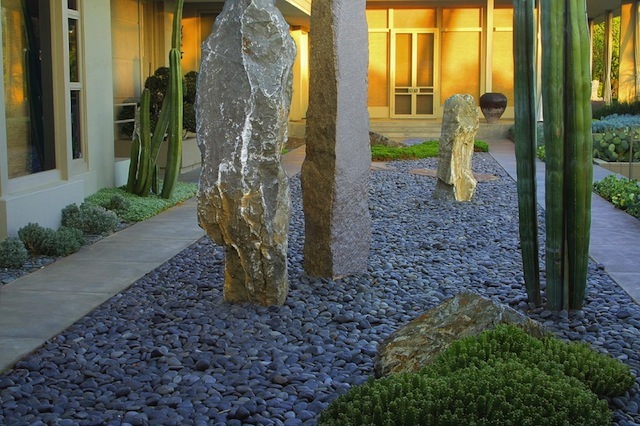 A prevailing impression from this meandering is that a Greene garden will always have something surprising. The space might be alternately crafty, mischievous, awe-inspiring and serene.
A prevailing impression from this meandering is that a Greene garden will always have something surprising. The space might be alternately crafty, mischievous, awe-inspiring and serene.
At the manorial Lovelace garden in Santa Barbara, a pool gate was a piece of sculpture. At Pasadena’s Blacker House, clever cheats by Greene around the house that her grandfather built have recreated a sense of vista in what looks like a significantly reduced lot. In a slide show given by Greene at the Los Angeles County Arboretum last year, the barren chic of a metal and glass home was softened, ironically, by rock. Standing stones set in a patio created kind of perpetual gathering where everyone was as haughtily beautiful and sculpted as Robin Wright Penn.

Greene’s own cottage-style home in Santa Barbara revealed intense absorption with recycling — and sculpture. There she turned a salvaged gutter into a handrail, a rusted gate into an arbor roof and created beds from the salvaged concrete now fashionably called “urbanite.” A personal favorite of her gardens is the children’s theater at Lotusland, where a gathering of gnomes means that the show never closes.
Click on the photos to enlarge them. Hold the cursor on images for photo credits. From the top, left to right: 1960s charcoals compared to gardens created after she became a landscape architect in the 1980s; a welded pool gate at the Lovelace garden in Santa Barbara; a handrail made from salvaged gutter; standing stones in a chic patio; the Lotusland children’s theater and an arbor roof made from an old fence fragment.
Comments
One Response to “Through Isabelle’s eyes”
Leave a Reply
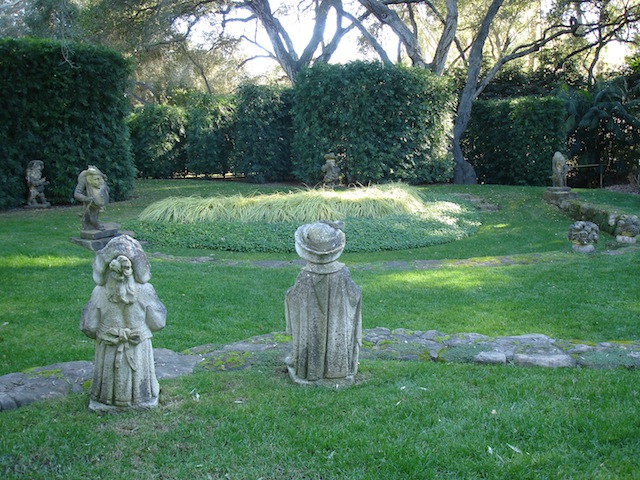




February 7th, 2014 @ 8:54 pm
Wonderful post, Emily. As soon in my studies I learned of Isabelle Greene, she became the landscape architect I most admire and whose work I most admire.